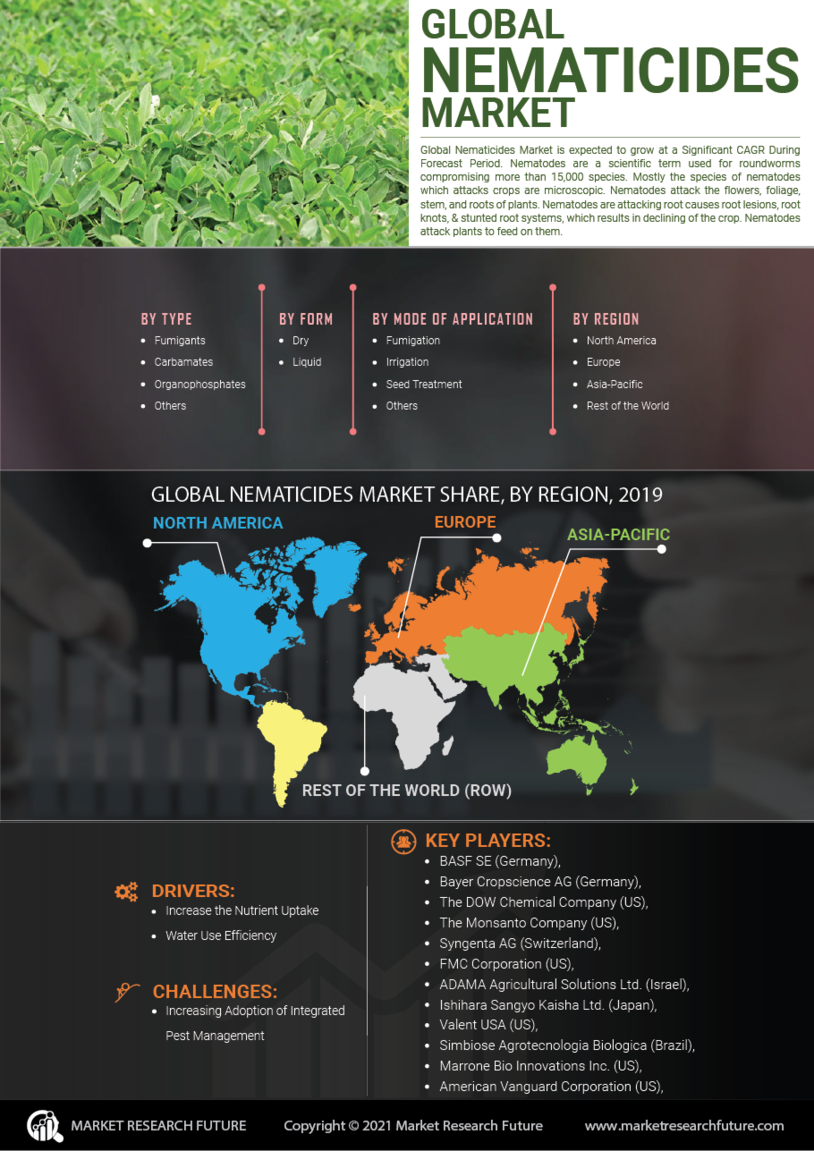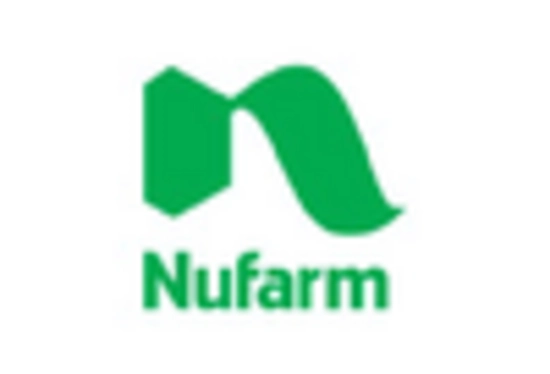Rising Global Food Demand
The increasing The Nematicides Industry. As the need for higher agricultural productivity intensifies, farmers are compelled to adopt effective pest control measures, including nematicides. Data suggests that by 2050, food production must increase by nearly 70% to meet the needs of the growing population. This urgent requirement for enhanced crop yields is likely to propel the demand for nematicides, as they play a crucial role in protecting crops from nematode infestations. Consequently, the Nematicides Market is expected to witness substantial growth in response to these pressures.
Technological Innovations in Pest Management
Technological advancements in pest management are significantly influencing the Nematicides Market. Innovations such as precision agriculture and integrated pest management systems are enhancing the effectiveness of nematicides. These technologies allow for targeted application, reducing the quantity of chemicals needed and minimizing environmental impact. Recent studies indicate that the adoption of precision agriculture can lead to a 20% reduction in pesticide use, which may positively affect the demand for more efficient nematicides. As these technologies continue to evolve, they are expected to reshape the landscape of the Nematicides Market, fostering growth and sustainability.
Increasing Demand for Sustainable Agriculture
The rising awareness regarding sustainable agricultural practices appears to drive the Nematicides Market. Farmers are increasingly seeking solutions that minimize environmental impact while maximizing crop yield. This shift towards sustainability is reflected in the growing adoption of nematicides that are less harmful to beneficial organisms. According to recent data, the market for sustainable agricultural products is projected to grow at a compound annual growth rate of approximately 10% over the next five years. This trend suggests that the Nematicides Market is likely to expand as more farmers prioritize eco-friendly solutions in their pest management strategies.
Regulatory Support for Pest Control Solutions
Regulatory frameworks that support the use of effective pest control solutions are shaping the Nematicides Market. Governments are increasingly recognizing the importance of nematicides in ensuring food security and are implementing policies that facilitate their use. This regulatory support may include streamlined approval processes for new products and incentives for farmers to adopt advanced pest management practices. As a result, the Nematicides Market is likely to benefit from a more favorable regulatory environment, encouraging innovation and the introduction of new nematicide formulations that meet safety and efficacy standards.
Expansion of Crop Varieties and Cultivation Practices
The diversification of crop varieties and cultivation practices is emerging as a key driver for the Nematicides Market. As farmers explore new crops and innovative farming techniques, the need for effective nematicide solutions becomes increasingly apparent. Certain crops are more susceptible to nematode damage, necessitating the use of specialized nematicides. Furthermore, the trend towards monoculture farming can exacerbate nematode issues, prompting farmers to seek effective control measures. This evolving agricultural landscape suggests that the Nematicides Market will continue to grow as it adapts to the changing needs of farmers and their crop management strategies.


















Leave a Comment